Matariki Williams reviews three books: The Anzac Violin: Alexander Aitken’s Story, by Jennifer Beck and Robyn Belton; The New Zealand Wars, by Philippa Werry and The Treaty of Waitangi in Tauranga, by Debbie McCauley.
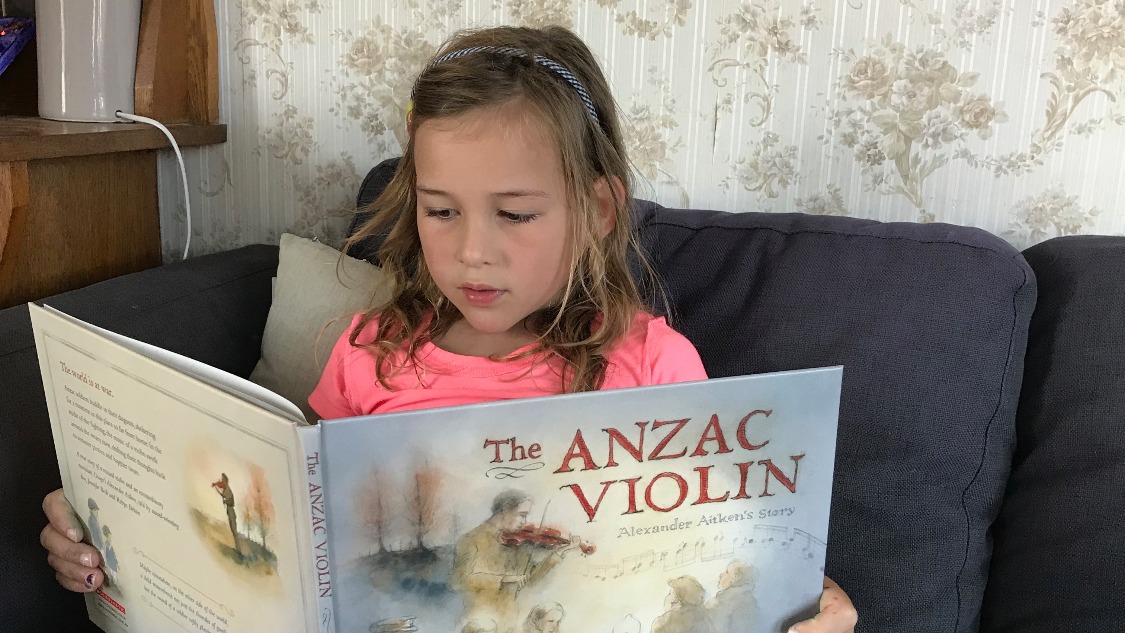
How do we teach our children our history? The messiness, the complexity, the beauty and the gore – it is what shapes us. History is quite literally at our fingertips, available via a quick search, but it is also under our feet, and it surrounds us wherever we live. Recent events, however, have shown us that New Zealanders are still unaware of, or uncomfortable about, some aspects of our history. These three new publications aimed at children of varying ages, have all attempted to communicate the somewhat unresolvable: the events that have made Aotearoa.
The three books are all about separate events in New Zealand history and yet they all intersect. They are aimed at different ages, but maintain an accessibility due to their visual appeal and writing style. Aesthetics is undoubtedly an important feature of illustrated non-fiction, but it must be acknowledged that content is queen. As a reader, it was the information, most especially the empathetic way in which the authors handled and presented it, that I found most crucial.
The Anzac Violin, by Jennifer Beck and Robyn Belton (Scholastic NZ)
As someone who reads a lot of non-fiction for work, I was struck by the way I had become immune to the profound events that these books cover. My first read of The Anzac Violin was to myself, and my first thoughts were that it was a nice book centred on a beloved object.
Ever the avid reader, my seven-year-old daughter found the book and declared her love for it before I’d even opened it. My cynical mind was quick to dismiss the book as a sweet story that masked the atrocities of the deeply tragic battles of World War I. However, later that night I read the book to my four-year-old son and struggled to hold back tears as I realised what was being communicated between the lines of the book. It was in the absences, what wasn’t said, that lay the truest terror: the unknown fate of the stretcher-bearer, the silence of the people who listened to Alexander play, the desperate need to keep hold of the violin.
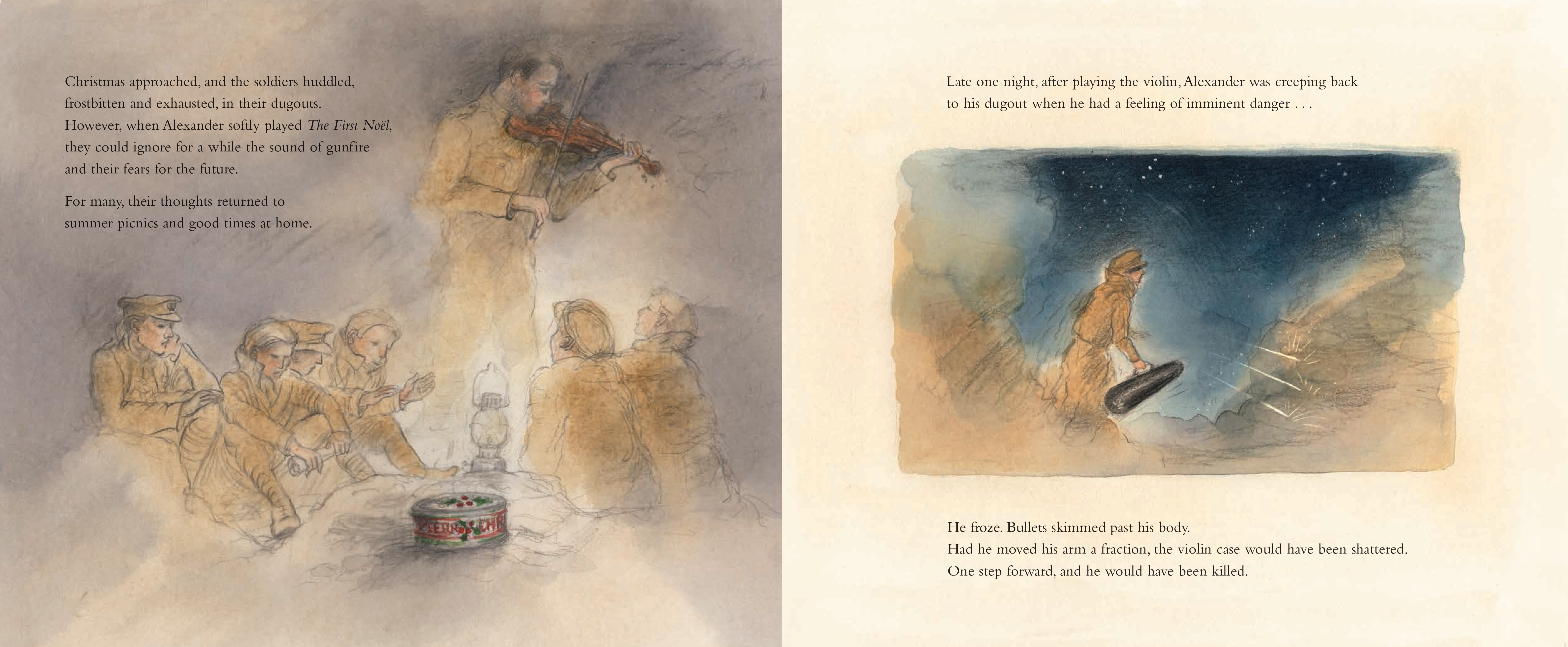
For me, the illustrations for this book worked as a metaphor. Nothing is drawn with sharp distinction, the pictures often fade off the sides of the pages. The illustrations show us that war is indefinable, it is nonsensical, and that as memories fade, we need to remember through books like this.
The illustrations show us that war is indefinable, it is nonsensical, and that as memories fade, we need to remember…
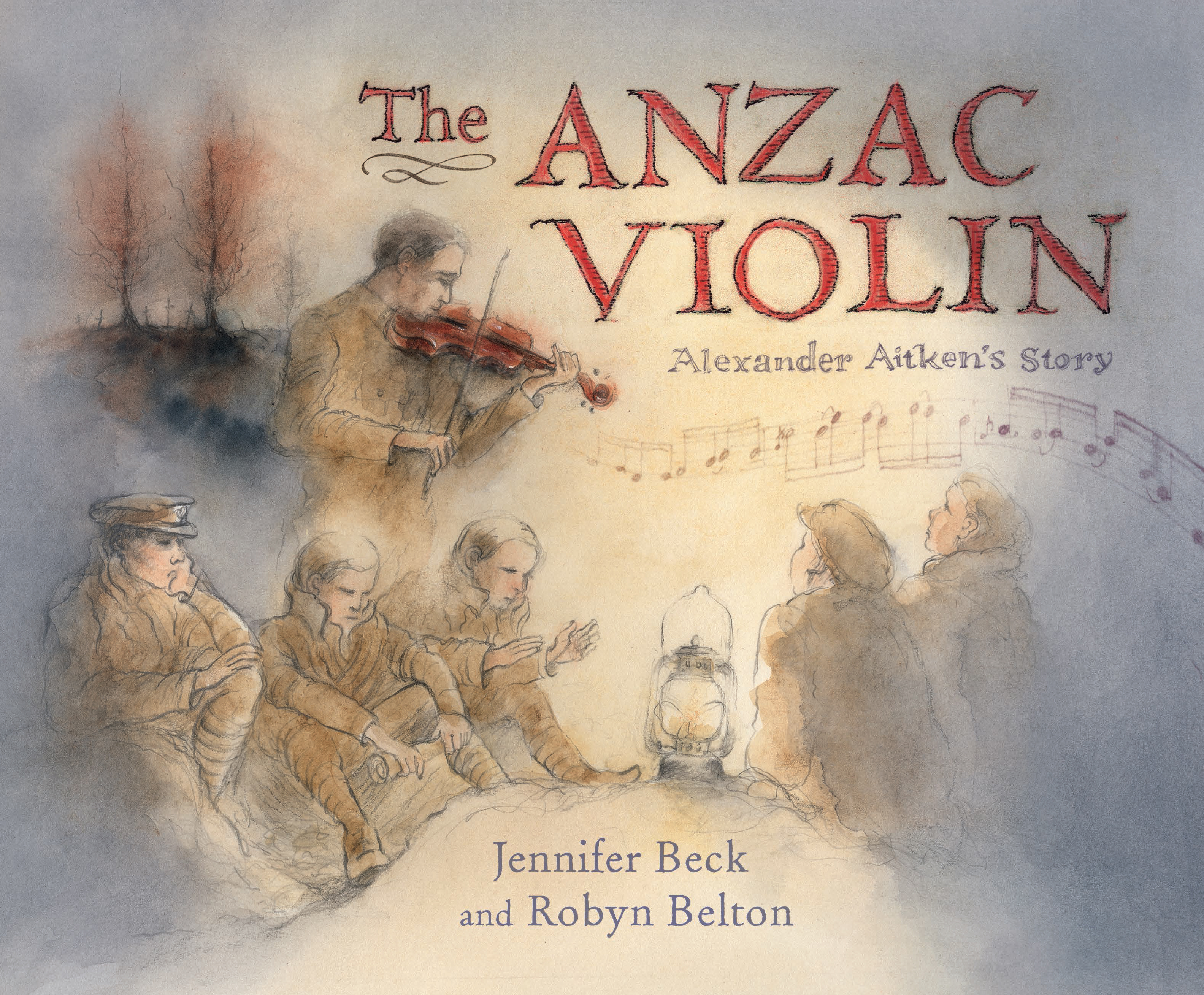
The Anzac Violin
By Jennifer Beck
Illustrated by Robyn Belton
Scholastic NZ
RRP: $28.00 (HB)
The New Zealand Wars, by Philippa Werry (New Holland Publishing)
With The New Zealand Wars, the immense nature of our histories is given prominence. These are histories that most New Zealanders know little about as we were not taught about them in school, a point that was raised by students of Ōtorohanga College in 2015. Students Leah Bell and Waimarama Anderson sought support for, and subsequently launched, a petition to have a national day of commemoration established for the New Zealand Land Wars. The petition drew a lot of publicity, and their dream was ultimately realised in October 2016.
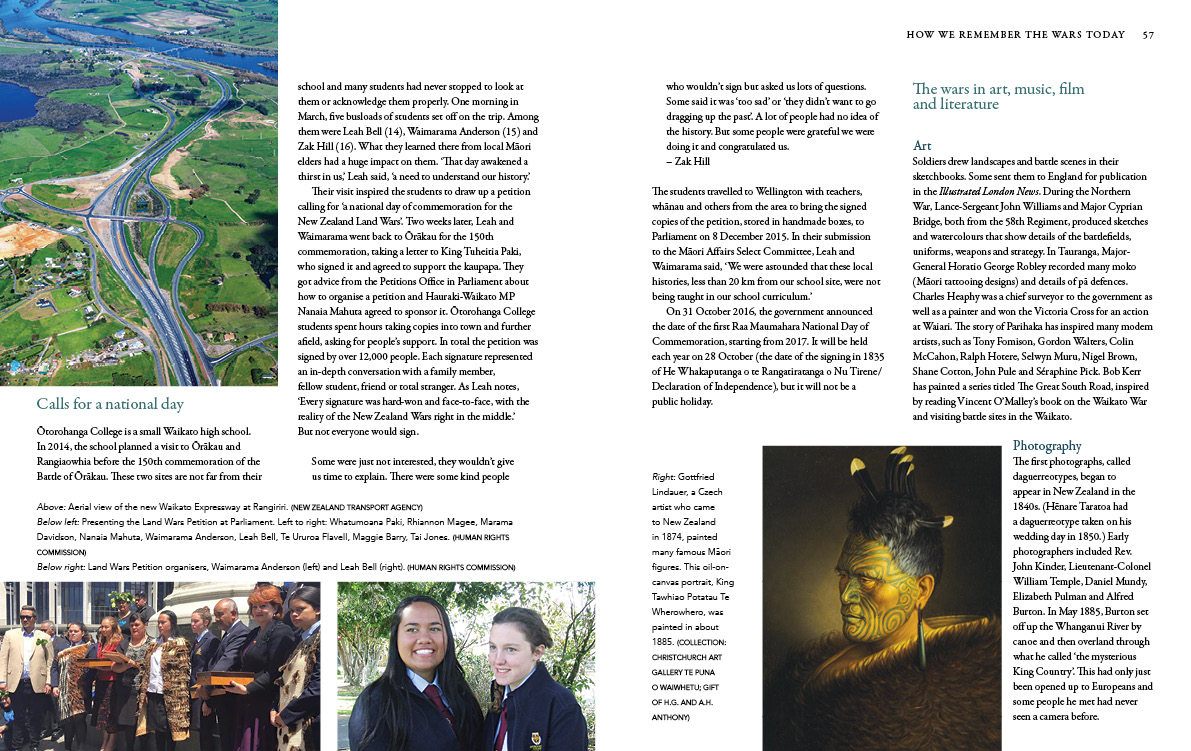
When it comes to teaching, and learning, about the New Zealand Wars, it is publications like Werry’s that are so necessary. Drawing on an almost immeasurable amount of sources, Werry has created a book that can be understood by a young audience. Histories like this are, no doubt, difficult to write. They need to distil information where so much remains unresolved for Māori, but what I appreciated about Werry’s approach is that her voice is still present. It is clear in the way she writes that she does not believe that this book will fill all the gaps in our curriculum but it is a prompt for change, it is an agitation to keep asking questions.
Drawing on an almost immeasurable amount of sources, Werry has created a book that can be understood by a young audience.
One of my favourite sections in the book is where Werry writes about the presence of the wars in the arts. While the wars are absent in our classrooms, they are present in our cinemas, literature and galleries. They are present in marae and churches. The arts have always provided an avenue to question the world around us. They can provide a visceral connection to history in a way that is more instantaneous than a tome on history, so I am pleased to see them given recognition.
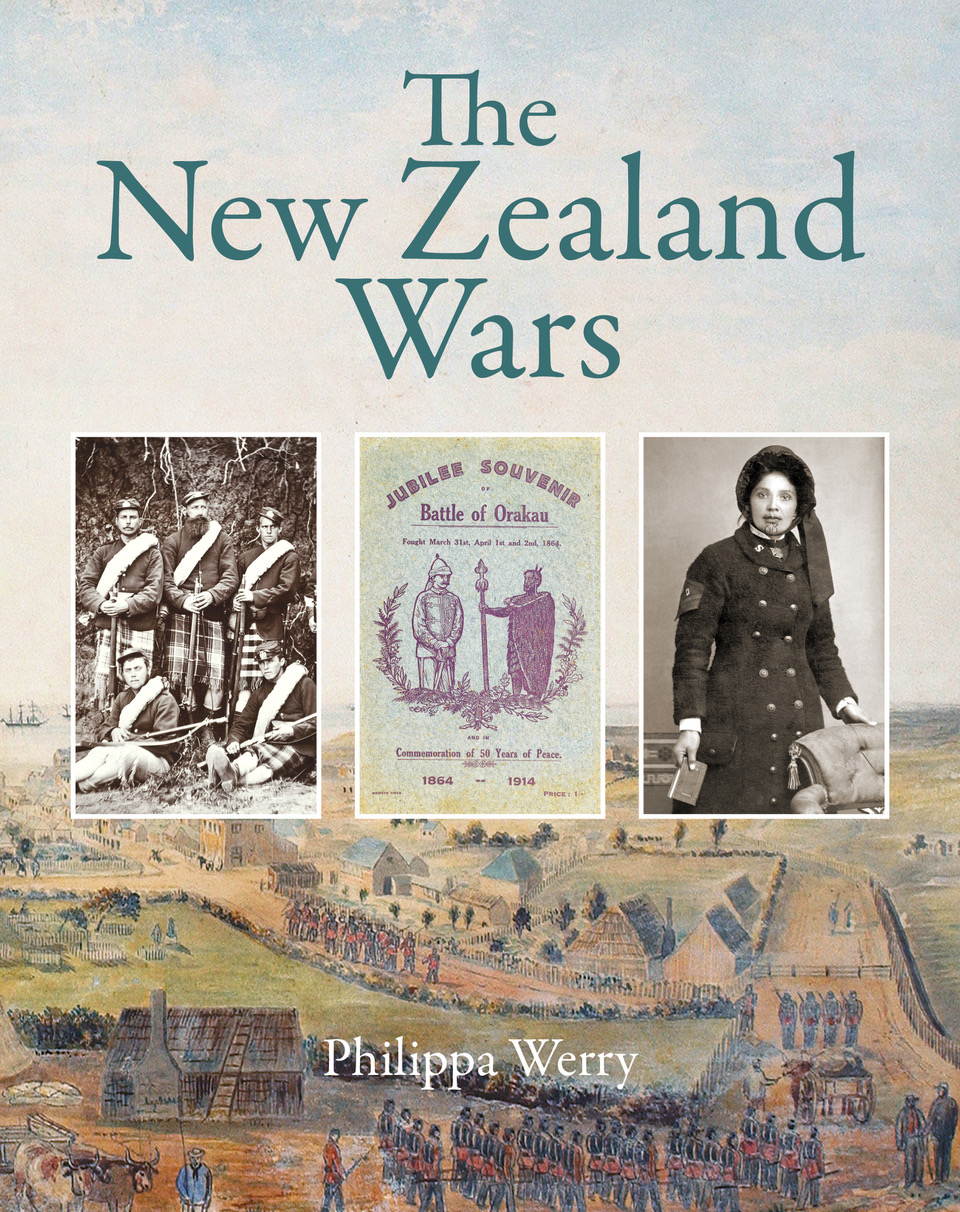
The Treaty of Waitangi in Tauranga, by Debbie McCauley
From a global event to a national event, we then come to a regional event with The Treaty of Waitangi in Tauranga.
I grew up in Tauranga and many of the place names were familiar but the people were all new to me. Though I’ve written of the gaps in how history is taught in schools in Aotearoa, I was fortunate to have teachers, Māori and Pākehā, who would take us to marae, battle sites, and heritage buildings to teach us about the history of the place. There is nothing that can match the imminence of knowing that what you’re being told about happened right where you’re standing. This book will be a huge asset for classrooms not unlike those I sat in. Not only that, it also provides other cities and towns with a template for presenting their own histories.
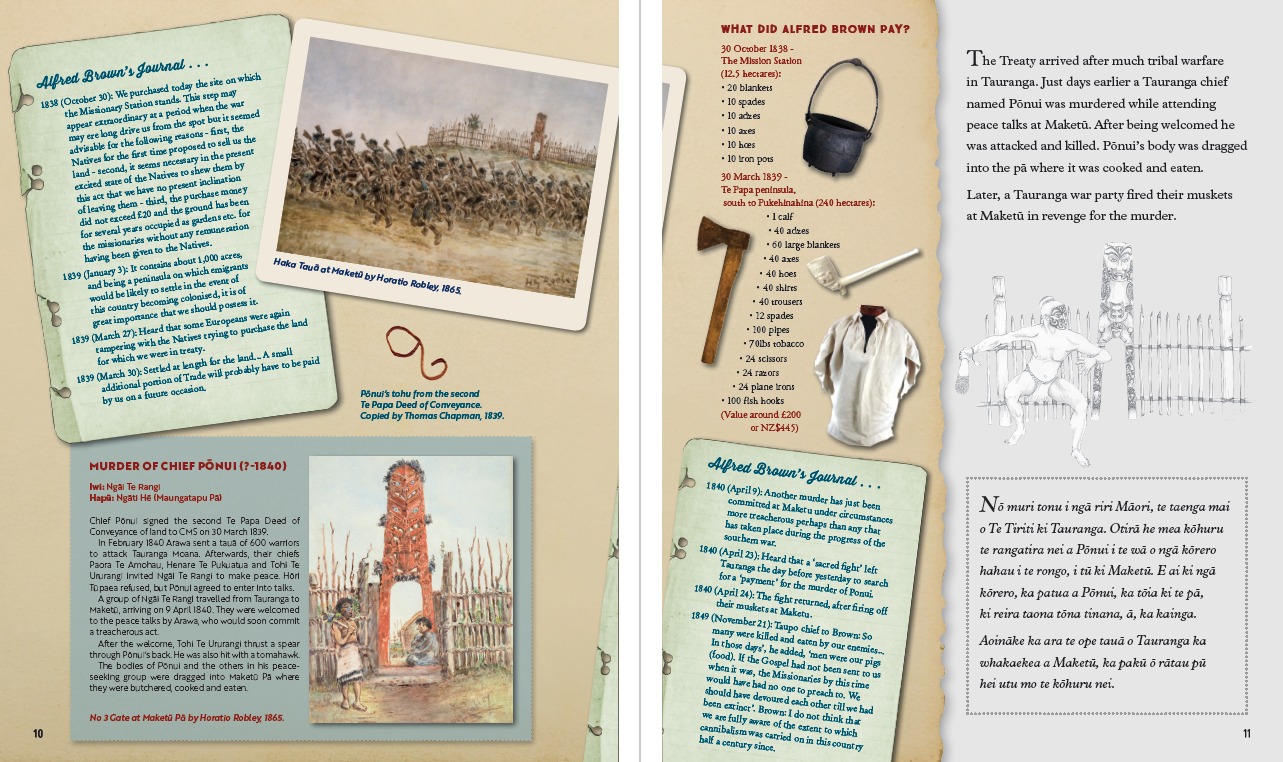
Like the other two books, McCauley’s is richly illustrated with a mixture of photographs, maps and taonga related to the people written about. At the back of the book, the signatories at Tauranga are listed and identified by the tohu they left on the parchment. Each signatory has had a biography written about them and I can’t help but think what a huge taonga this is for their descendants.
…the signatories at Tauranga are listed and identified by the tohu they left on the parchment. Each signatory has had a biography written about them and I can’t help but think what a huge taonga this is for their descendants.
As is the case with The New Zealand Wars, The Treaty of Waitangi in Tauranga has included educational resources for teachers to use with their students to further extrapolate the kōrero therein. This is necessary. The layers and layers of kōrero within these books need to be added to and taken forward by younger generations. By offering these resources, the authors are acknowledging that the histories they are presenting are not absolute, they are merely pathways to further understandings.
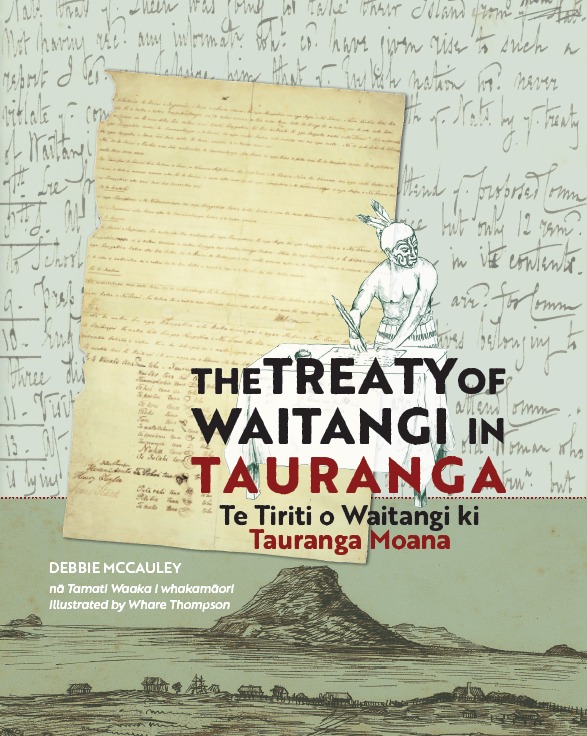
The Treaty of Waitangi in tauranga / Te tiriti o waitangi ki tauranga moana
By Debbie McCauley
Illustrated by Whare Joseph Thompson
Published by Mauao Publishing
RRP: $39.95
While I acknowledge the huge amount of research and consultation that each of these authors has undertaken, I couldn’t help but wonder how each of these stories would look if told from a Māori perspective. How also would they read as an iwi history that absorbed each of these major events into one iwi narrative?
So I come again to my children, and the question I asked at the start of this review – how do we teach our children our history?
I am struck by the way children play, their imaginations conjuring up battles as they play as superhero, atua, television character. Their battles are limited by their innocence and what we are able to protect them from. It is through my children that I can feel the terror written between the lines of these three books.
And yet, we must teach them about these histories by talking with them, reading to them, and listening to them. They will know our histories when we take them home to our marae, provide them books to read, and take them to walk the spine of this land.

Matariki Williams
Matariki Williams (Tūhoe, Ngāti Hauiti, Taranaki, Ngāti Whakaue) worked her way from a stint in publishing (mihi to both Huia Publishers and Bridget Williams Books) to museums where she is now a Curator Mātauranga Māori at Te Papa. Outside of this, she is also Editor - Kaupapa Māori at the Pantograph Punch, as well guest-editing at The Wireless. Most importantly she is mama taniwha to her two haututū kids.



